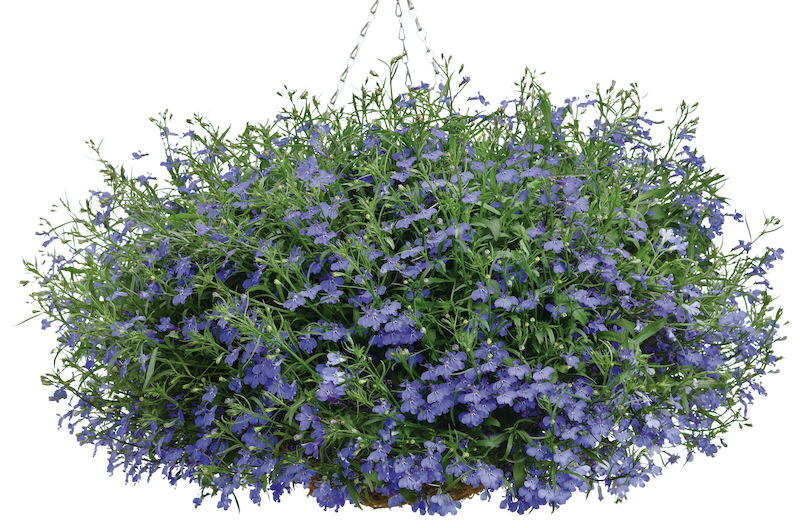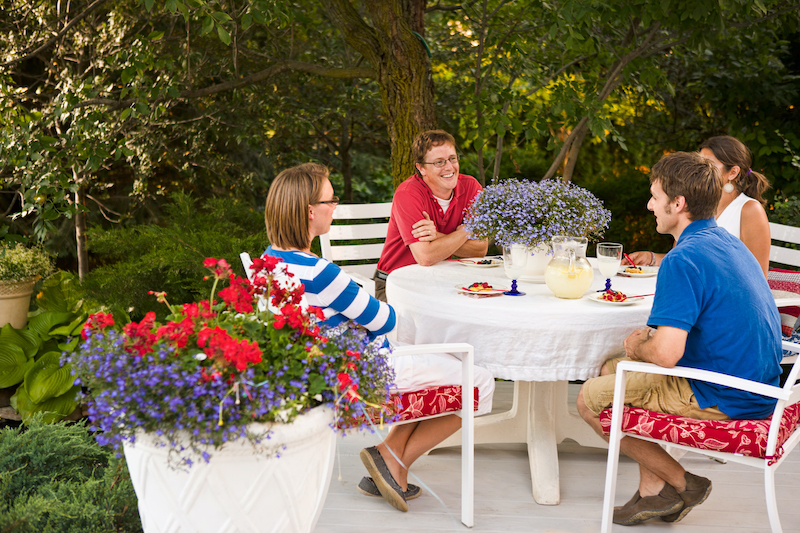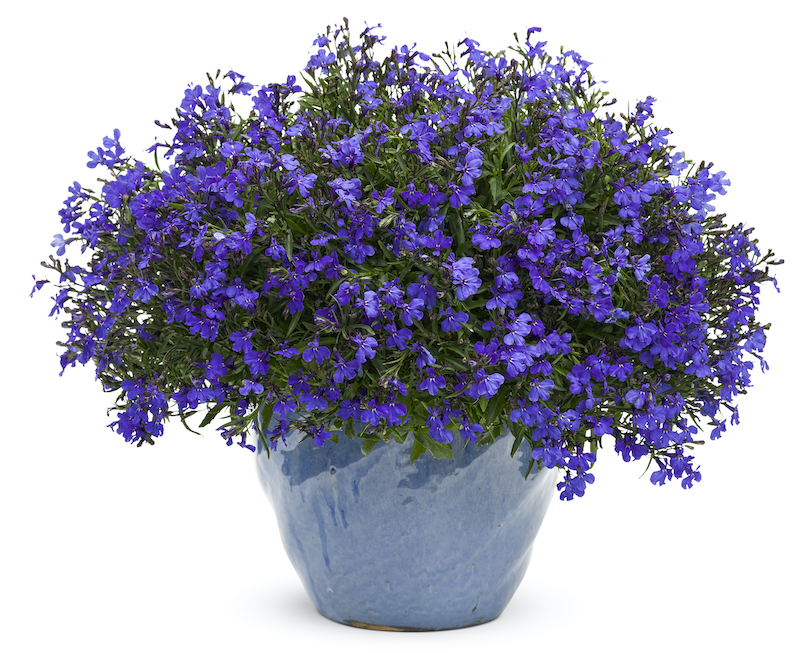Growing Lobelia
Lobelia is most commonly a compact and colorful flowering annual (Lobelia erinus). There are some lobelia varieties such as Cardinal Flower (L. cardinalis) that are cold-hardy perennials from zone 2-10 and others such as Great Blue Lobelia (L. siphilitica) that are tender perennials from zone 9-11. Lobelia flowers come in a large color range from white, pink, purple, purplish blue, and blue.
Lobelia is most commonly used as a bedding plant in borders, ground covers, rock gardens, containers, and hanging baskets. The more compact flowering annual lobelias can have upright bushy or trailing habits from 3-5”. The more perennial varieties of lobelia are typically much taller and upright, reaching up to 3’ in height. Lobelia plants are easy to grow and tolerate conditions from full sun to part shade and typically bloom up to the first frost of the season.

Planting Lobelia
Plant lobelia in well-drained rich soil. If planting in containers, use an all-purpose potting mix. Choose a planting location that gets 4-6 hours of sunlight each day with adequate space for the plants to mature; depending on the variety you are planting, this is anywhere from 6”-18” apart.
Dig a hole the size of the pot you are transplanting, amend the planting hole with some compost or granular fertilizer, and plant your lobelia allowing the crown to stay slightly above ground. Water in your newly planted lobelia plant.

Watering Lobelia
Water lobelia plants regularly during the peak of the summer season in well-draining soil. When the soil is dry below the surface, make sure to thoroughly saturate the soil. Be careful not to overwater your lobelia or leave the roots in standing water.
Fertilizing Lobelia
Flowering annual lobelia is considered a heavy feeder. The soil should be amended with compost or a slow-release granular fertilizer at the time of planting to give lobelia a nutrient boost from the start. As the plant grows in and establishes, use a general liquid fertilizer every two weeks at most during the growing season.
Pruning Lobelia
Lobelia does not typically need too much pruning or deadheading. Many of the compact annual lobelia varieties are considered self-cleaning continuous bloomers. In the event that your lobelia looks tired or leggy, you can cut the plant back to encourage new growth and blooms.
Caring For Lobelia in Pots
When planting lobelia in pots, use an all-purpose well-balanced potting mix. Choose pots with drainage holes or use liner pots that you can remove when watering. Place your lobelia containers in a location that gets 4-6 hours of sunlight a day. Container plants can dry out more quickly than garden plants, so make sure to check on the watering needs of your containers regularly and water thoroughly when soil has dried out.

Winter Care for Lobelia
Common flowering annual lobelias will not survive past the first frost. Plants can be left in the ground or pulled out and composted at the end of the season. Perennial or tender perennial varieties will die back after frost and then reemerge in the springtime. Foliage from perennial/tender perennial lobelias can be cut back in fall or left until late winter or early spring prior to the next growing season.
Common Lobelia Care Questions
Why Is My Lobelia Dying?
Lobelias are not fans of heat and humidity and thrive in cooler weather (spring and fall). They may stop flowering or die back during the heat of summer. Deadheading and trimming the lobelia back if this happens can help to encourage a second rush of blooms in the fall. Whether in the ground or in a container, which will dry out faster, the soil needs to be consistently moist.
Do Lobelia Like Sun Or Shade?
Lobelia can perform well in partial shade to full sun, but during the hottest parts of summer, or in hotter climates, they certainly will benefit from some shade during hot afternoon hours.
Do Lobelia Need To Be Deadheaded?
Deadheading lobelia isn't required, as they're self-cleaning and the flowers will fall away themselves. Deadheading and giving a nice trim if they stop producing during the heat of the summer can give them a boost though, and help to encourage a second bloom in the fall.
Is Lobelia An Annual Or Perennial?
Lobelia is most often grown as an annual, though may be perennial in some warmer climates.
Have a question about Lobelia? Fill out the form below and we will try and get back to your question as soon as possible. We may even feature your question in this article to help other gardeners!
 |
Author Katie Endicott - Published 9-14-2022 |
